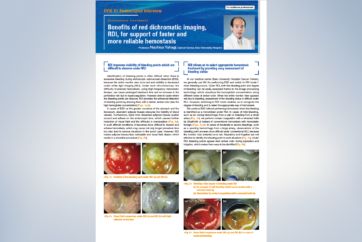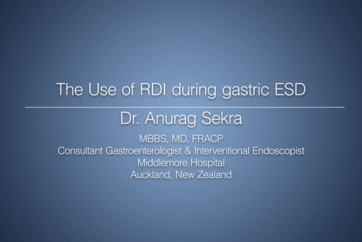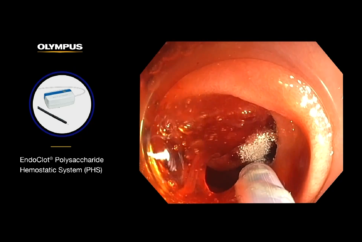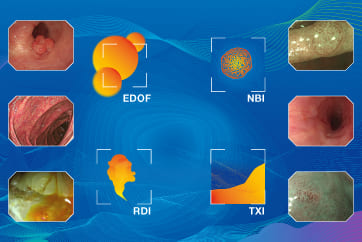Dual Knife
Model KD-650Q/U
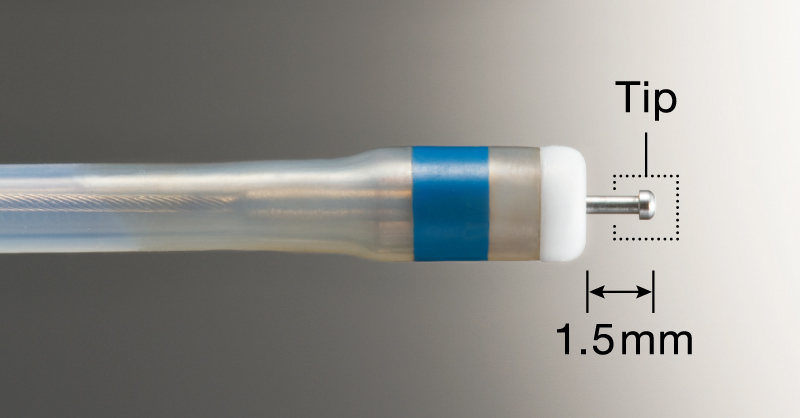
Basic specifications
Distal end
Cutting knife length: Extended — 1.5 mm
Retracted — 0.3 mm
Cutting knife diameter: ø0.4 mm (except tip)
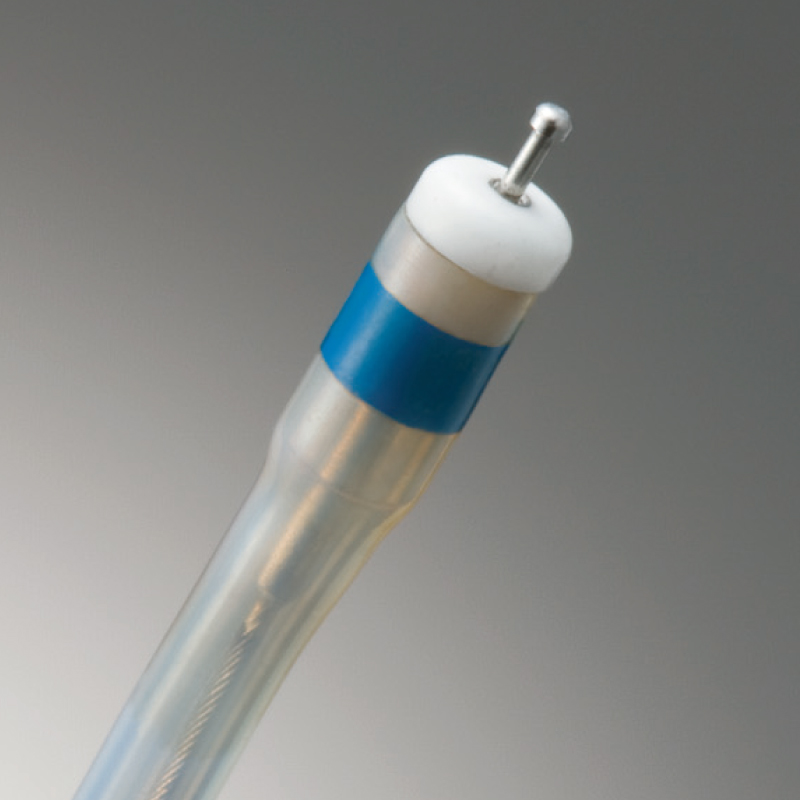
Sheath
Outer diameter: ø2.0 mm (max.ø 2.7 mm)
Working length:
KD-650Q — 1,950 mm
KD-650U — 2,300 mm
Electrosurgical settings and tips on using the Dual Knife
| Dr. Naohisa Yahagi |
Electrosurgical unit |
VIO300D | Cautions and Tips on Use |
| Mucosal incision | Dry Cut, Effect 2, 30 W | ・The knife should be fully extended during mucosal incision and submucosal dissection. When you retract the knife, haemostasis is possible by applying the current. ・Although the knife length is limited to 1.5 mm, the sharpness is very fine thanks to the needle shape of the knife. Rounded edges on the sheath’s distal end improve contact with the area being incised. Be careful not to press the knife hard against the tissue during incision and dissection. ・The small tip on the knife makes it easier to hook the knife on the tissue. Hooking the tip on the tissue and manipulating the device as if stroking the tissue enables incision and dissection. ・If burnt tissue attaches to the knife during coagulation, frequently remove it using a moist piece of gauze. |
|
| Submucosal dissection |
Swift Coag. Effect 4, 30 W | ||
| Haemostasis | Swift Coag. Effect 4, 30 W |
Case with Dual Knife
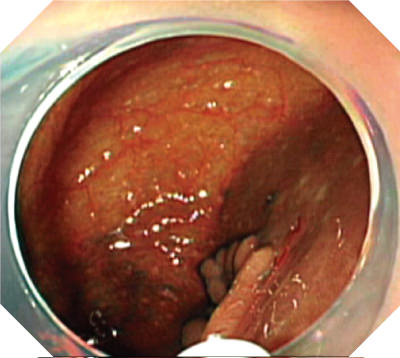
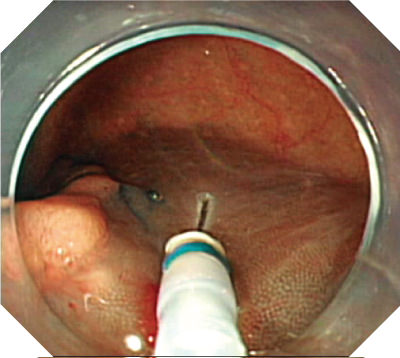
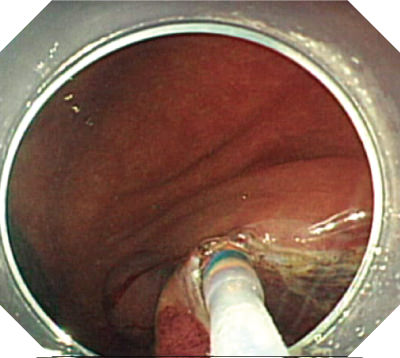
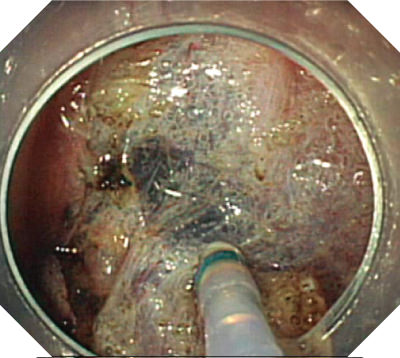
For Safer and More Appropriate Use
Information on this page provided by Olympus
Basic Operation of Dual Knife
The Dual Knife can be adjusted in two ways, i.e., it can be retracted or extended depending on the requirement.
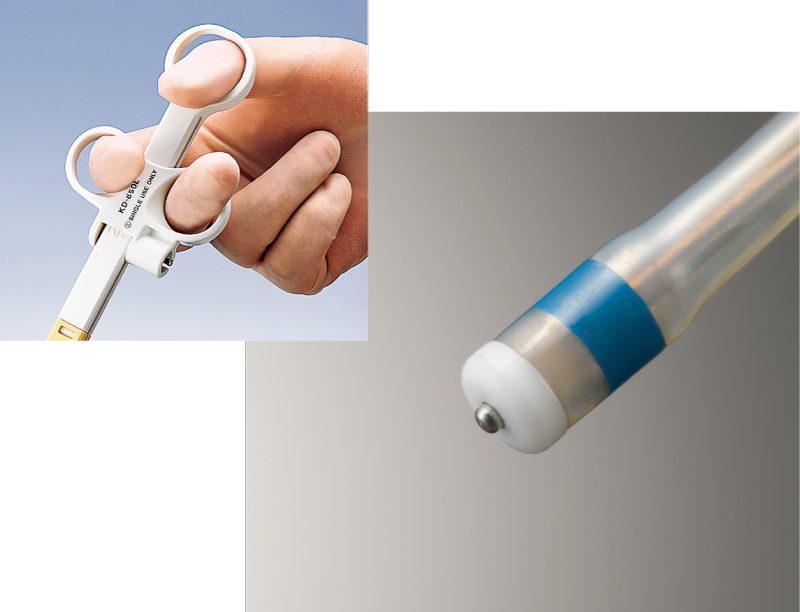
When the knife is retracted
The Dual Knife can be used for marking and haemostasis. When the slider is pulled all the way, the knife will be withdrawn into the sheath with only 0.3 mm of the tip projecting.
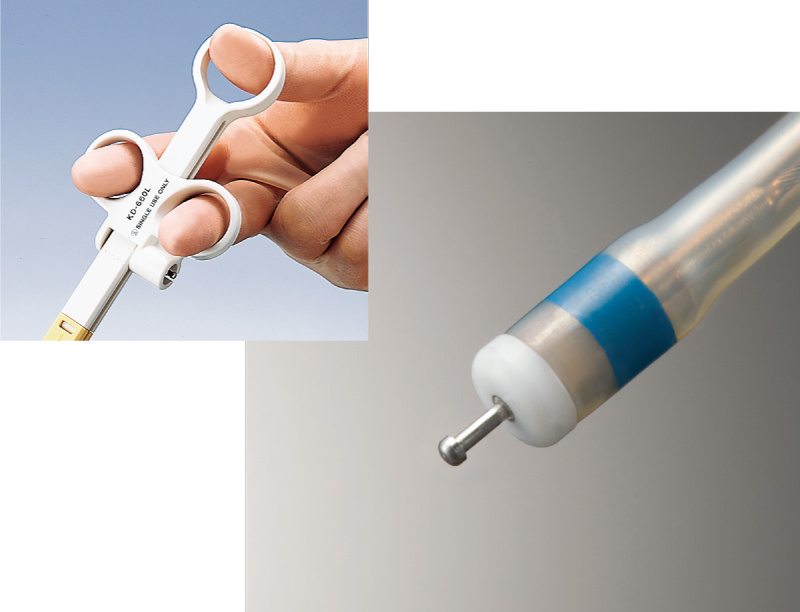
When the knife is extended
The Dual Knife can also be used for mucosal incision and submucosal dissection. The knife is extended by 1.5 mm when the slider is pushed completely.
Please note that under some conditions, damage such as melting of the distal end or bending of the knife may occur. In particular, under the circumstances outlined below, an excessive load is likely to be imposed on the knife, increasing the risk that the knife will be damaged.
Conditions that impose a heavy load on the knife and countermeasures
1 When the current is activated while the knife is in contact with the tissue under high-moisture conditions:
Remove moisture from the regions coming in contact with the endotherapy device, including mucus and blood, before activation.
2 When the electrosurgical unit is set to a high-voltage waveform and activation is continued for an extended period:
Reduce the use of high-voltage waveforms to the minimum required level. Keep the activation period as short as possible when using a high-voltage waveform.
| Electrosurgical unit: Voltage intensities of various waveforms |
| Cut / Soft Coagulation < Blend < Coagulation < Spray Coagulation∗2 (e.g., APC mode) |
∗1 Long period of activation using a high-voltage waveform may increase invasion in deep tissue.
∗2 Spray Coagulation mode cannot be used with this instrument.
3 When the knife is subjected to excessive force during removal of tissue attached to the knife:
Be careful not to apply excessive force when removing tissue attached to the knife.
- Content Type

